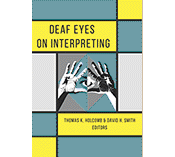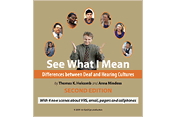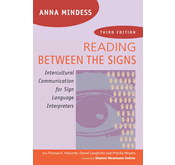 This is the seventeenth weekly installment featuring highlights from the 20 chapters in the new book, Deaf Eyes on Interpreting, edited by Thomas K. Holcomb and David H. Smith, which was released in June by Gallaudet University Press.
This is the seventeenth weekly installment featuring highlights from the 20 chapters in the new book, Deaf Eyes on Interpreting, edited by Thomas K. Holcomb and David H. Smith, which was released in June by Gallaudet University Press.
Wyatte Hall makes the case that cultural conflicts are the basis of many of the problems between Deaf people and interpreters. While interpreters feel that they are following professional standards, Deaf people feel insulted that their cultural norms are being violated. For example, each group has a different perspective on the concept of “neutrality.” To Deaf people, neutrality means that an interpreter should work in a way that elevates the position of Deaf people to a level where they could truly function as equals to hearing people. But to most interpreters, neutrality means to treat both their Deaf and hearing consumers the same.
To improve the interpreting experience for Deaf people, Hall proposes that interpreting models need to evolve to a more on Deaf-centered approach. This model would address: feedback, pacing and partnership among other topics. His basic message is that interpreters should work WITH Deaf people, not FOR them.







